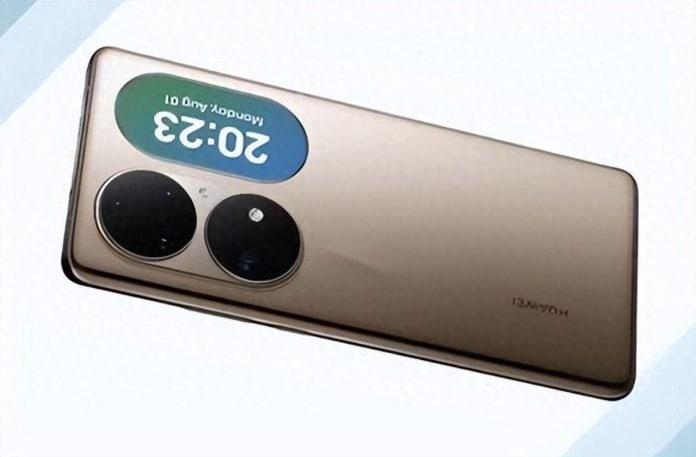In today’s fast-paced world, smartphones have become an indispensable part of our lives. From capturing precious moments to staying connected with friends and family, smartphones play a pivotal role. China, with its robust research and development capabilities, has been at the forefront of smartphone innovation. In this article, we will delve into Huawei’s latest flagship, the Huawei P70 series, and its revolutionary self-developed CMOS sensor. This technological advancement marks a significant milestone in China’s smartphone industry and offers a glimpse into the future of domestic smartphone brands.
1. The Evolution of Smartphone Technology
As technology advances at an unprecedented pace, the smartphone industry is constantly evolving. With each new model, manufacturers strive to offer improved features and better user experiences. Huawei, a leading player in the smartphone market, has been at the forefront of this innovation. The P70 series, with its self-developed CMOS sensor, is a testament to China’s research and development strength.
2. What is a CMOS Sensor?
Before we dive deeper into the Huawei P70 series, it’s essential to understand what a CMOS sensor is and why it’s so crucial in the world of smartphone cameras. CMOS stands for Complementary Metal-Oxide-Semiconductor. These sensors serve as the heart of a smartphone’s camera, capturing light to create stunning photos. The quality of these sensors significantly impacts the overall photo quality.
3. Huawei’s Breakthrough: The Self-Developed CMOS Sensor
Huawei’s latest flagship, the P70 series, brings forth a groundbreaking development in the form of a self-developed CMOS sensor. This sensor offers a range of advantages that set it apart from the competition.
① High Sensitivity
One of the standout features of Huawei’s self-developed CMOS sensor is its high sensitivity. This means it excels in capturing more light, especially in low-light conditions. As a result, the photos taken with the P70 series exhibit enhanced quality, even in challenging lighting scenarios.
② High Dynamic Range
Compared to traditional CMOS sensors, Huawei’s self-developed sensors boast a higher dynamic range. This technology allows them to capture more detail in both highlights and shadows, resulting in photos that are not only sharper but also more dimensional and rich.
③ Smaller Size, Bigger Impact
In the ever-competitive smartphone market, size matters. Huawei’s self-developed CMOS sensors are smaller in size, contributing to higher screen-to-body ratios. This not only enhances the overall aesthetics of the phone but also leads to a thinner and lighter device. This innovation addresses the modern consumer’s desire for sleek and portable smartphones.
④ Lower Power Consumption
Efficiency is key when it comes to smartphone technology. The new CMOS sensor in the P70 series is designed with power efficiency in mind. This means that it has the potential to improve the battery life of the Huawei P70, ensuring that users can stay connected and capture memories throughout the day.
4. Driving China’s Smartphone Industry Forward
The incorporation of self-developed CMOS sensors in the Huawei P70 series is not just about improving camera performance. It also plays a crucial role in propelling the rapid development of China’s smartphone industry. As Chinese companies continue to break through in critical technology areas, the competitiveness of domestically produced smartphones in the global market strengthens. This progress is a testament to China’s commitment to technological advancement.
5. A Comprehensive Approach
The Huawei P70 series is not solely reliant on the CMOS sensor for its competitive edge. It is expected to incorporate other domestic technologies, such as Kirin chips and the HarmonyOS operating system. This comprehensive approach contributes to the overall competitiveness of China’s smartphone industry and further elevates the level of domestication.
6. The Future of Domestic Smartphone Brands
In conclusion, the use of self-developed CMOS sensors in the Huawei P70 series represents a new milestone in China’s domestication process of the smartphone industry chain. It’s a testament to China’s growing research and development strength, particularly in critical technology areas. As we look ahead, there is every reason to believe that more domestic smartphone brands will stand out in the global market with their independently developed core technologies.
7. FAQs
A: CMOS sensors are critical in smartphone cameras, as they capture light to create photos. The quality of these sensors directly impacts photo quality.
A: Huawei’s CMOS sensor offers higher sensitivity, a greater dynamic range, a smaller size, and lower power consumption compared to traditional CMOS sensors.
A: High sensitivity allows the sensor to capture more light, particularly in low-light conditions, resulting in better photo quality.
A: The dynamic range of a CMOS sensor determines its ability to capture detail in both highlights and shadows. A higher dynamic range leads to more dimensional and rich photos.
A: A smaller sensor size contributes to higher screen-to-body ratios and a thinner, lightweight phone design, addressing the modern consumer’s preferences.
A: A power-efficient sensor can potentially improve the battery life of a smartphone, ensuring users can use their device throughout the day.
8. Conclusion
Huawei’s self-developed CMOS sensor in the P70 series is a game-changer for the smartphone industry. It not only enhances photo quality but also symbolizes China’s strength in research and development. As we embrace the future, we anticipate that more domestic smartphone brands will rise to global prominence, thanks to their independently developed core technologies.
Related:


[…] Huawei P70: Revolutionizing Smartphone Cameras […]
[…] Huawei P70: Revolutionizing Smartphone Cameras […]